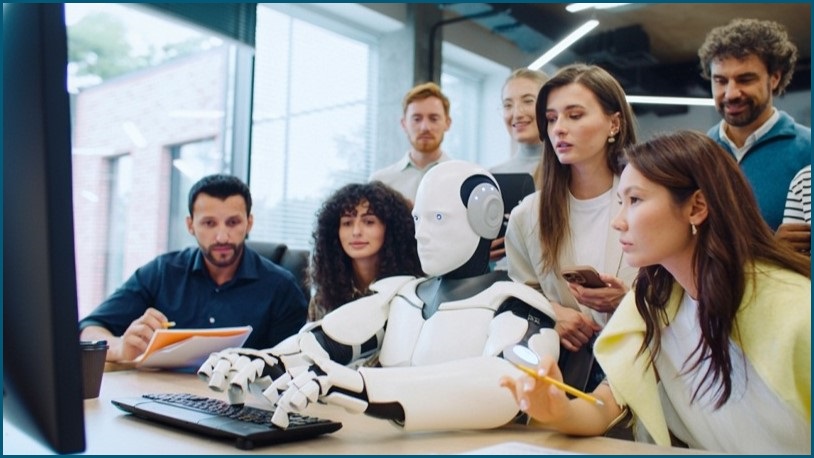Workers need to properly be engaged with the adoption of AI to ensure they are not “invisible bystanders” and the full potential of the technology is realised, a new report has found.
The University of Technology Sydney’s Human Technology Institute has released a report, From Invisible to Involved, providing a roadmap for how workplaces can effectively implement AI and bring their workers along for the journey.
The report found that workers are too often feeling like “invisible bystanders” when their organisations are implementing AI initiatives, and that the full opportunities on offer through AI won’t be achieved if workers aren’t engaged.
The report pointed to other studies that have found that organisations that invest effectively in AI see an average return of $3.50 for every $1 invested, and that this figure jumps to $8 for industry leaders.
“Involving workers in how AI is implemented helps organisations surface practical opportunities and hidden challenges, leading to better solutions,” Human Technology Institute Professor Nicholas Davis said.
“Yet few organisations have effective, structured mechanisms for worker engagement on AI. As a result, workers are often disconnected from critical technology decisions that directly affect them, putting both successful AI implementation and good governance at risk.”
Despite these proven results, many Australian companies are “missing the mark” when it comes to engagement with employees on AI.
“This is a missed opportunity, both strategically and from a governance perspective.”
According to the report, organisations that engage properly with their workers on AI see 5.9 times more financial benefit, 2.1 times higher return-on-investment and a 4.6 times higher top worker performance.
How to bring workers on board
The report outlines how companies can properly engage with their workers on the implementation of AI tools and initiatives.
This must be done across all phases of implementation, including when shaping the purpose of the use of the technology, when the solutions are being designed in the measurement of its effectiveness and improvement efforts.
“By engaging workers at each phase, organisations maximise the benefits of AI, minimise risks and foster a culture of collaboration and innovation,” the report said.
To be effective, worker engagement must be responsive, collaborative and adaptive, and employers need to genuinely listen to the perspective of workers and incorporate them into decision-making, the report said.
This can be done through conducting targeted, two-way conversations, reflexive surveys, collective brainstorming and co-design workshops.
With an estimated three-quarters of all workers already using AI, this will ensure their practical expertise is incorporated in any implementations.
“Engaging workers should not be seen as optional,” the report said.
“Worker engagement delivers better outcomes across organisations.
“With AI, it is particularly critical as it helps build trust, drive adoption and unlock the full value of these systems.”
Not a silver bullet
Organisations must also be prepared for AI to not be the answer to all of their problems, the report stated.
“This approach ensures that AI is a real solution to existing pains, not a gimmick or nice-to-have,” it said.
The report pointed to a six-month trial of generative AI tool ChatGPT in the public service in the first half of 2024 as an example of an effective engagement with workers on AI.
This trial, which cost more than $1.2 million, included more than 7,600 government staff across dozens of agencies, and received generally positive reviews.
It found that the use of AI saved workers about an hour per day by doing tasks such as summarising and searching information, but led to an increased time in checking this work for errors.
There is work to be done in getting Australians on board, with a recent survey finding that just 30 per cent of people believe the benefits of the technology outweighs its risks.
The study also found that only 55 per cent of Australians are experiencing the benefits of AI, compared to a global average of 73 per cent.
New federal Industry and Innovation Minister Tim Ayres has signalled a major focus on AI, urging the government and private sector to “lean in” to the technology.










